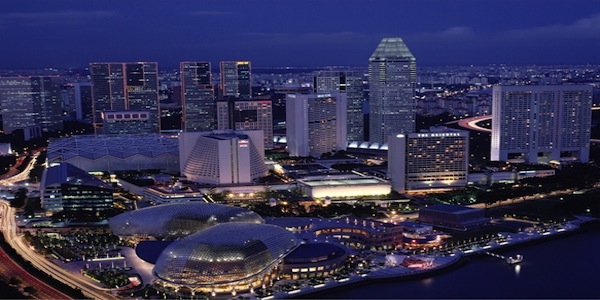
December 13, 2013, by Katharine Adeney
Riots in Singapore as it struggles to juggle growth and migration
Caryl Thompson writes:
Singapore, an affluent city-state, is known for being orderly and conformist. So the riots that took place on the night of the 8 December in the Little India district came as a shock to authorities and residents alike.
This was not, as prime minister Lee Hsieng Loong, has suggested an “isolated incident”. Rather, it reveals underlying tensions that may have implications for the nation’s future social cohesion and economic growth.
The disturbance took place after a 33 year-old migrant worker from India, Sakthivel Kumaravelu, was knocked down by a bus and tragically died at the scene. A crowd of 400 responded by attacking the bus and caused considerable damage, particularly to emergency service vehicles. At least 18 people were injured. Anti-riot and police officers quickly calmed the situation and made 27 arrests, mostly of Indian nationals.
But a response based purely on punishing the rioters or stopping them from drinking will not be sufficient to allay concerns and prevent future outbreaks of unrest.
Growing pains
Singapore’s impressive economic growth has largely been built on migrant labour. Its current population of approximately 5.4m consists of 3.3m Singaporean citizens, just over half a million non-native permanent residents and more than 1.5m migrants who make up over a quarter of the overall population.
Many of the migrants are low-skilled, transient workers drawn from neighbouring Asian countries, including the Philippines, Indonesia, Malaysia, India, Bangladesh and China. They largely work in construction, manufacturing and domestic service. According to the NGO Transient Workers Count Too, these migrants often endure exploitation, harsh and dangerous working environments and inhospitable living conditions.
The Little India riots aren’t the first signs of migrant unrest. Chinese bus drivers went on strike earlier this year in protest against their unequal treatment. Such actions are generally frowned upon though, and five drivers were jailed and later deported back to China. They were the country’s first strikes in 26 years.
Singapore faces an economic dilemma. In order to sustain economic growth it needs migrant labour. In a recent publication, A Sustainable Population for a Dynamic Singapore, the government stated its intention to increase immigration as it will “continue to need a significant number of foreign workers to complement the Singaporean core in the workforce”.
It estimates that by 2030, the population could range between 6.6m and 6.9m of which residents (that is, full citizens and permanent residents) will comprise an estimated 4.2m to 4.4m, with the remainder made up of non-resident immigrants.
This huge level of migration is necessary due to the convergence of two demographic issues. Singapore has an ageing population, with the median age increasing from 19.5 years in 1970 to 38.9 years in 2013. Now, more than 10% of the population is older than 65.
It also has one of the lowest fertility rates in the world. The recognised number of children each woman must have to maintain population size, known at the “replacement level” is 2.1. In Singapore, the fertility rate has now dropped to just 1.3 children per female.
Increased opposition
With spiralling house prices and pressure on infrastructure and services, the government’s policy of increased migration has met with considerable opposition. In February of this year, large-scale public demonstrations took place indicating growing hostility to an increase in migrant numbers.
The recent riot sparked an outpouring of xenophobic and racist comments on social media networks which the prime minister was forced to respond to on Facebook, stating:
We must not let this bad incident tarnish our views of foreigner workers here. Nor should we condone hateful or xenophobic comments, especially online.
Singapore is not alone in its dependence on migrant workers to support economic growth, although its demographics make it especially important. Unlike many other countries, the government and the media have not fallen into the trap of allowing migration to be presented as a threat to societal security and national identity.
Contrast this with public pronouncements in Australia about turning back asylum seekers arriving by boat, in neighbouring Malaysia about migrant crime, or in the UK about the loss of jobs to foreigners.
Until recently Singaporeans have largely accepted the significant numbers of migrant workers, recognising that migrant work underpins the affluent lifestyles enjoyed by native citizens. But this recent bout of rioting, and the following hostility towards migrants, could go in two directions.
It could signal a broader change in popular opinion, putting pressure on the media and ultimately government to move towards the more xenophobic attitudes that characterise other countries. Or Singapore could instead retain its very pragmatic approach to accommodating migrant workers – after all, the direct economic benefits they bring are very clear.
If Singapore is to choose the latter direction, government will need to pay more attention to integrating their migrants rather than marginalising them. If they fail to do this, the city-state could be set for a period of social unrest and economic decline.
Caryl Thompson is a doctoral researcher at the Institute of Asia and Pacific Studies, University of Nottingham
This article first appeared in The Conversation, December 12, 2013.
No comments yet, fill out a comment to be the first

Leave a Reply